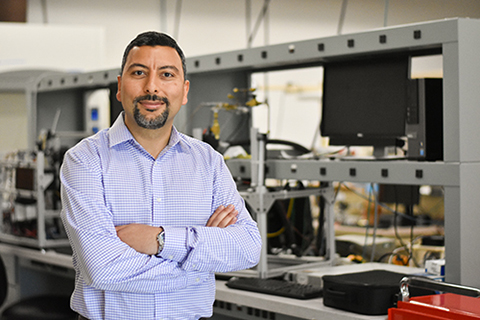 A UNT College of Engineering team was one of 11 teams selected nationwide for a new
NASA X-Hab challenge aimed at improving life support for astronauts in space.
A UNT College of Engineering team was one of 11 teams selected nationwide for a new
NASA X-Hab challenge aimed at improving life support for astronauts in space.
Engineering Technology Associate Professor Huseyin Bostanci and his undergraduate team’s challenge will be to design, build, and characterize a functional prototype of a microgravity gas-liquid separator for an air revitalization system. In other words, the team is looking at ways to better remove carbon dioxide from manned space vehicles and habitats, ultimately ensuring the availability of oxygen. The project will build upon a number of existing carbon dioxide removal systems but will replace gravity-dependent tanks used for the gas-liquid separation and storage with vortex style separators, allowing the new design to be non-gravity-dependent.
“Space applications are very unique and sometimes they’re ahead of terrestrial applications in terms of the technology involved,” said Bostanci. “This project will give one of our upcoming senior design teams the chance to work on a funded project that is not only innovative, but is also for a national agency.”
The team will collaborate with two other experts from Texas A&M and Johnson Space Center, and use the $30,000 funding from the National Space Grant Foundation to develop their prototype during the 2019-2020 academic year. They also will complete engineering design reviews and provide three project status briefings to NASA.
“The process gives students a real-life look into how NASA works by requiring the university teams follow their regular review and deadline cycles,” said Bostanci. “It helps the students shift their mindset from an academic calendar to one more reflective of the industry.”
The team will present their final X-Hab challenge prototype for evaluation in May 2020.